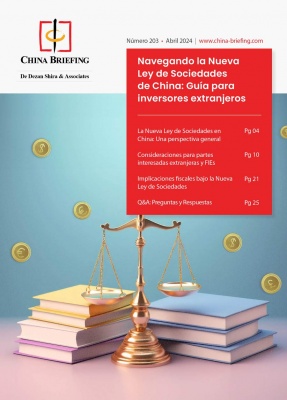SAT Clarifies CIT Calculation Issues Regarding Expenses, Fixed Asset Values
Jul. 21 – China’s State Administration of Taxation (SAT) released an announcement (SAT Announcement [2011] No.34) on June 9 clarifying several corporate income tax (CIT) issues related to the deduction of distinct expenses from CIT calculation basis, calculation of fixed asset values, as well as depreciation after building replacement or expansion, and determination of income types after enterprises reduce or withdraw their investments.
Deduction of interest rates on loans
The announcement confirmed the content of Article 38 in the CIT Law Implementation Regulations (CITLIR), which stipulates a non-financial enterprise’s loan interest expense is deductible from CIT calculation when the enterprise borrows from another non-financial enterprise, as long as the amount of the interest does not exceed the one calculated based on an interest rate charged by a financial institution on a loan of the same type and same term. Therefore, when an enterprise claims the deduction of the initial interest payment for each piece of loan from the CIT basis, it should provide a “Statement of the Interest Rate Charged by Financial Enterprises on Loans of Same Type and Same Term,” in order to prove that its interest expense is reasonable.
Deduction of uniform expense
According to Article 27 of CITLIR, the expense of company uniforms for staff is deductible from CIT calculation.
Deduction of aviation personnel training expenses
According to Article 27 of CITLIR, airline companies’ expenses for training pilots, crew and aviation security staff are CIT deductible.
Tax treatment for building improvements
If a building that has not been fully depreciated is dismantled and rebuilt, the asset’s net value (net value = original value – depreciation) should be included into the taxable value of the new building. Based on the updated taxable value and the depreciation period prescribed in the CITLIR, the depreciation should be calculated starting from the month following the one when the new building is brought into use.
If a building that has not been fully depreciated is expanded, the expenses for the asset’s expansion should be included into the taxable value of the upgraded building. Based on the depreciation period prescribed in the CITLIR, the depreciation should be re-calculated starting from the month following the one when the upgraded building is brought into use. However, if the building’s estimated useful life is shorter than the depreciation period prescribed in the CITLIR, the remaining useful life can be adopted as the depreciation period.
Tax treatment for investment withdrawal or deduction
In the announcement, the income received by an enterprise after it withdraws or deducts its investment has been classified into the following types:
- Investment recovery = paid-up capital of the investor
- Dividend income = Percentage of reduced shares х (accumulated undistributed profits + capital surplus)
- Capital gain = Assets acquired from the capital withdrawal or reduction – investment recovery – dividend income
In the end, the document clarifies that in cases where enterprises fail to obtain valid documentation to prove certain costs or expenses that have actually incurred during the tax year, they can claim the costs or expenses during the quarterly CIT filing and provide the valid documentation upon annual CIT filing.
The announcement came into force on July 1, 2011. However, if there were any cases that were not settled in line with Announcement No.34, the concerning taxable income can also be adjusted accordingly during the annual CIT filing of 2011.
Dezan Shira & Associates is a boutique professional services firm providing foreign direct investment business advisory, tax, accounting, payroll and due diligence services for multinational clients in China. For advice, please email tax@dezshira.com, visit www.dezshira.com, or download the firm’s brochure here.
Related Reading
 The China Tax Guide (Fifth Edition)
The China Tax Guide (Fifth Edition)
This popular book, fully updated with all recent tax changes and amendments, details all taxes in China affecting businesses and individuals, how to calculate the amounts due, tax registration and filing procedures, tax minimization techniques, and claiming VAT rebates. It also details good financial management techniques, handling negotiations with the tax bureau and annual audit and compliance procedures.
China Clarifies CIT Issues on Income from Government Bonds
SAT Clarifies Specific CIT Declaration Issues
SAT Clarifies EIT Payment Issues for Non-resident Enterprises
Shanghai Issues Notice on CIT Declaration and Payment by Resident Enterprises
Preferential Tax Policy for Small-scale and Low-profit Enterprises to Continue
SAT Clarifies CIT Payment Rate from High-tech Enterprises during Qualification Review
- Previous Article Fitch Report Highlights Key Weaknesses in Chinese Companies
- Next Article Effect of China’s New Social Insurance Law on Foreign Employees/Employers



























